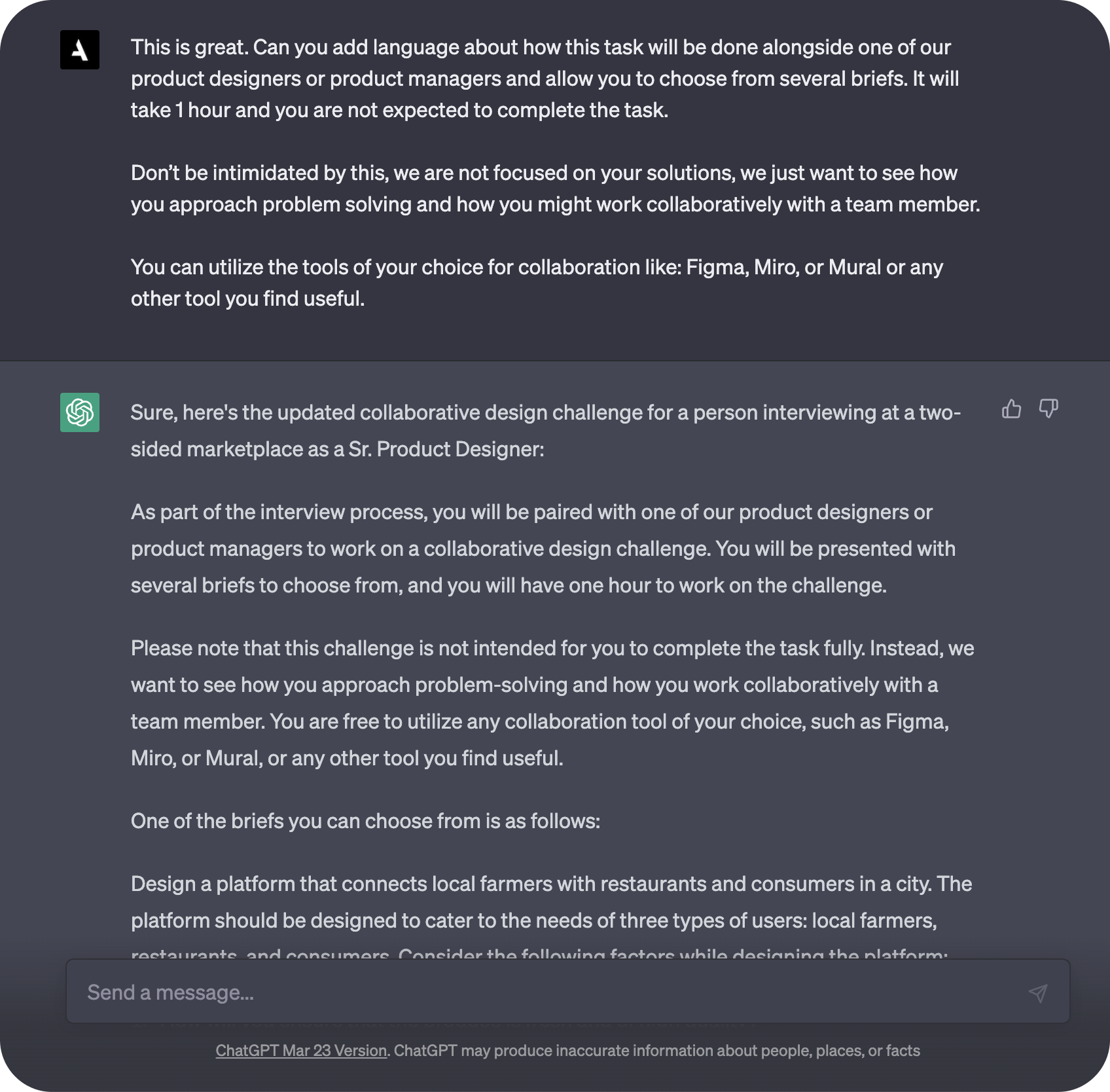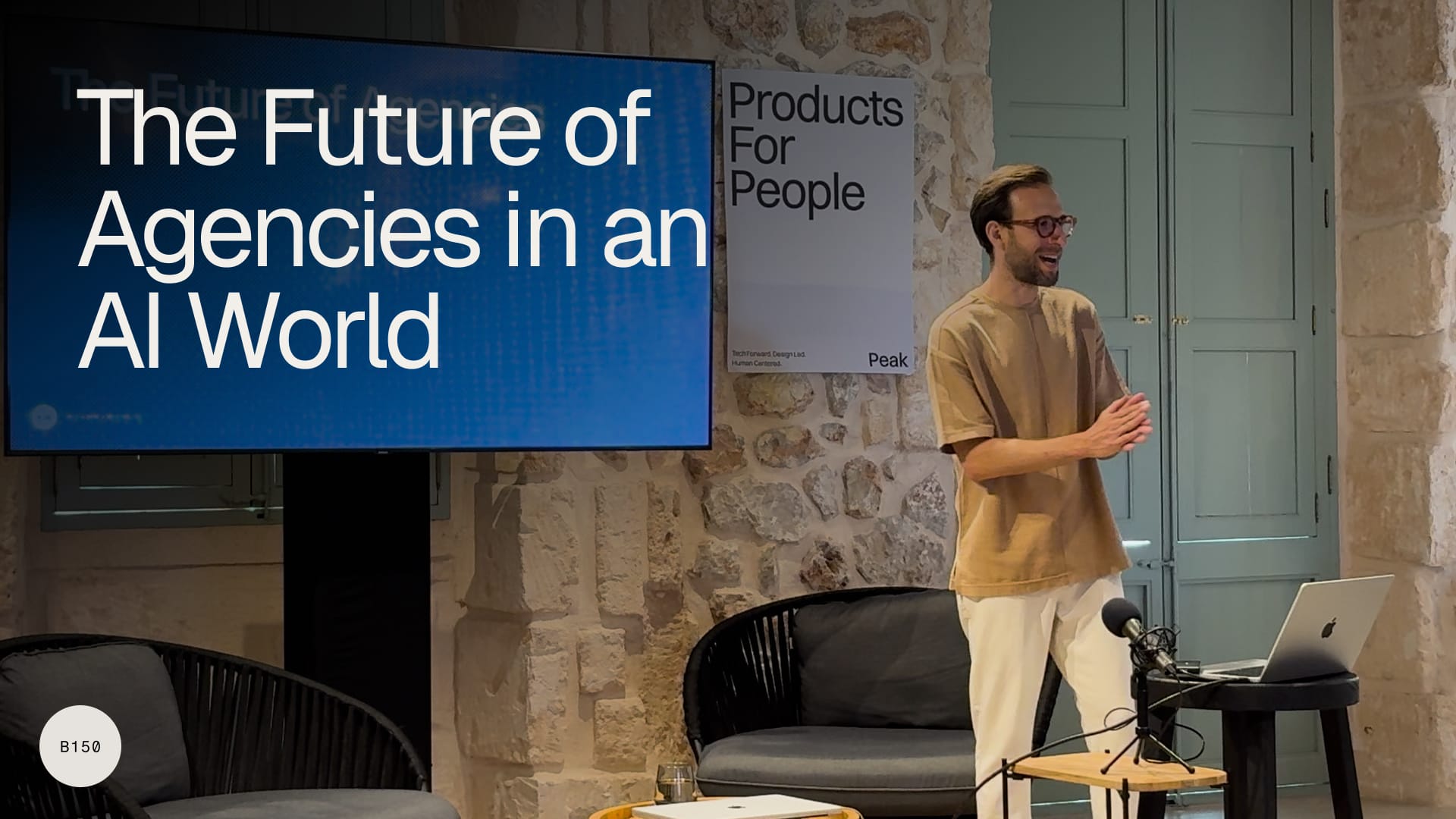How to create ethical collaborative design challenges using ChatGPT
Learn to ethically assess job candidates with collaborative exercises using ChatGPT.

The interview process is a critical stage for companies to identify potential employees who have the skills and qualities needed to perform a particular role. In recent years, there has been a growing focus on ensuring that the interview process is both ethical and inclusive. One way to achieve this is by using collaborative exercises that are designed to evaluate candidates' skills and abilities. However, creating these exercises can be a challenge, especially when it comes to designing ethical prompts. This is where ChatGPT comes in.
ChatGPT is a language model that uses deep learning to generate human-like text. With its ability to generate high-quality, coherent responses to prompts, it can be used to create ethical UX design prompts for collaborative exercises during the interview process. Here's how:
Step 1: Define the objective of the collaborative exercise
Before creating any prompts, it's important to define the objective of the collaborative exercise. This will help ensure that the prompts are relevant and useful in evaluating the candidates' skills and abilities. For instance, if the objective is to evaluate candidates' ability to work in a team, then the prompts should be designed to encourage collaboration and teamwork. Here is an example:
Company: Airbnb
Objective: To test a persons ability to solve complex design problems when there are multiple types of users in a two-sided marketplace.
Role: Sr. Product Designer
Step 2: Generate prompts
Once the objective has been defined, the next step is to use ChatGPT to generate prompts. To do this, you can input a specific prompt or topic related to UX or Product Design and ask ChatGPT to generate responses. For example:

Step 3: Evaluate and refine the prompts
After generating the prompts, it's important to evaluate and refine them to ensure that they meet the ethical standards you have set. This can involve reviewing the prompts to ensure that they do not contain any biases and are not asking the candidate to solve a real problem for the company. Additionally, you may want to consider giving your prompt extra details that ensure that the exercise is not too ambitious. For example, see how I added to my prompt below:

Step 4: Incorporate prompts into collaborative exercises
Once you have evaluated and refined the prompts, you can incorporate them into collaborative exercises during the interview process.
For example, look at the results of our prompts below:

Collaborative Design Challenge for Sr. Product Designer at a Two-Sided Marketplace
As part of the interview process, you will be paired with one of our product designers or product managers to work on a collaborative design challenge. You will be presented with several briefs to choose from, and you will have one hour to work on the challenge.
Please note that this challenge is not intended for you to complete the task fully. Instead, we want to see how you approach problem-solving and how you work collaboratively with a team member. You are free to utilize any collaboration tool of your choice, such as Figma, Miro, or Mural, or any other tool you find useful.
Brief
Design a platform that connects local farmers with restaurants and consumers in a city. The platform should be designed to cater to the needs of three types of users: local farmers, restaurants, and consumers. Consider the following factors while designing the platform:
• How will you ensure that the produce is fresh and of high quality?
• How will you handle payment and delivery?
• How will you ensure that the platform is easy to use for all types of users?
• How will you incentivize local farmers, restaurants, and consumers to use the platform?
• How will you ensure that the platform is scalable and can accommodate a large number of users and transactions?
You will be expected to collaborate with your team member to come up with a high-level design solution, consider user needs and preferences, and incorporate feedback. We encourage you to ask questions, think critically, and communicate effectively with your team member throughout the process.
Good luck!
Conclusion
In conclusion, using ChatGPT to create ethical UX design prompts for collaborative exercises during the interview process can be a valuable tool for companies looking to evaluate candidates' skills and abilities while also ensuring that the process is ethical. By following the steps outlined above, you can create effective prompts that will help you identify the best candidates for the role.





